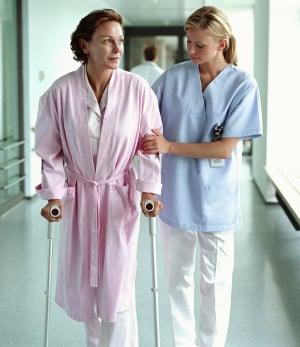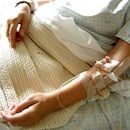
Handle with Care: Nursing & Patient Safety
Barbara has been a nurse for 36 years, but one ill-fated shift changed her nursing career forever – from direct patient care to spending the last 13 years of her career in an administrative clinical position. In her role as a critical care nurse, Barbara was manually lifting an obese patient, when a career-changing back injury occurred. After countless physician visits, medical treatments and physical therapy sessions, Barbara conceded she was no longer able to handle the physical demands of nursing, and was forced to find another nursing career path, away from the bedside.
Like many others working in healthcare, Barbara’s story is all too familiar. With compounding factors such as the aging nursing workforce and rising obesity rates, patient handling and mobility has become an increasing problem (NIOSH, 2014). According to the Bureau of Labor Statistics, in 2013 the highest incidence rates of musculoskeletal disorders (MSDs) experienced by healthcare workers involved psychiatric aides and nursing assistants. The total incidence rate of registered nurses with MSDs was 55.7% (n=11,430). Many of these injuries are related to repeated manual patient handling activities such as transferring and repositioning patients, and working in awkward postures (OSHA, 2015).
The risks healthcare workers face from excessive physical demands during the delivery of patient care has received national attention. In 2013, the American Nurses Association (ANA) published Safe Patient Handling and Mobility: Interprofessional National Standards Across the Care Continuum. These (8) eight standards of care were developed by an interprofessional group of subject matter experts to address safe patient handling and mobility (SPHM) (Garcia, 2014). The following is an overview of the ANA standards:
- Standard 1: Establish a culture of safety.
- Standard 2: Implement and sustain a SPHM program.
- Standard 3: Incorporate ergonomic design principles to provide a safe care environment.
- Standard 4: Select, install, and maintain SPHM technology.
- Standard 5: Establish a system for education, training and maintaining competence.
- Standard 6: Integrate patient-centered SPHM assessment, plan of care, and use of SPHM technology.
- Standard 7: Include SPHM in reasonable accommodation and post-injury return to work.
- Standard 8: Establish a comprehensive evaluation system.
Since 2003, several states have enacted laws or regulations regarding safe patient handling, and many healthcare facilities in those states have implemented a safe patient handling program to reduce the risks of MSDs from overexertion (ANA, 2014).
Treating MSDs is costly. In 2011, the total aggregate direct cost plus indirect costs to treat persons with an MSD was estimated to be $873.8 billion, and the cost is rapidly growing annually (Yelin & Watkins-Castillo, 2014).
With patients at the forefront, nurses have a responsibility to ensure they utilize proper equipment and safe handling interventions to prevent harm and promote safety for patients. Moreover, nurses are also accountable in ensuring adequate training is received and best practices are instituted to avoid costly, and potentially career-altering injuries. To learn more about safe patient handling, check out the course from RN.com entitled: Ergonomics and SPHM for Nurses.
References:
American Nurses Association [ANA] (2014). Safe Patient Handling and Movement (SPHM).
Bureau of Labor Statistics, (2013). Table 18. Number, incidence rate, and median days away from work for nonfatal occupational injuries and illnesses involving days away from work and musculoskeletal disorders by selected worker occupation and ownership, 2013.
Garcia, A. (2014). Standards to protect nurses from handling mobility injuries. Current Topics in Safe Patient Handling and Mobility [supplement to American Nurse Today], 9 (9), 11-12.
National Institute for Occupational Safety and Health [NIOSH], (2014). Safe Patient Handling.
Occupational Safety & Health Administration [OSHA], (2015). Safe Patient Handling.
Yelin, E. H. & Watkins-Castillo, S. I. (2014). Cost to Treat Musculoskeletal Diseases. The Burden of Muscoloskeletal Diseases in the United States.




